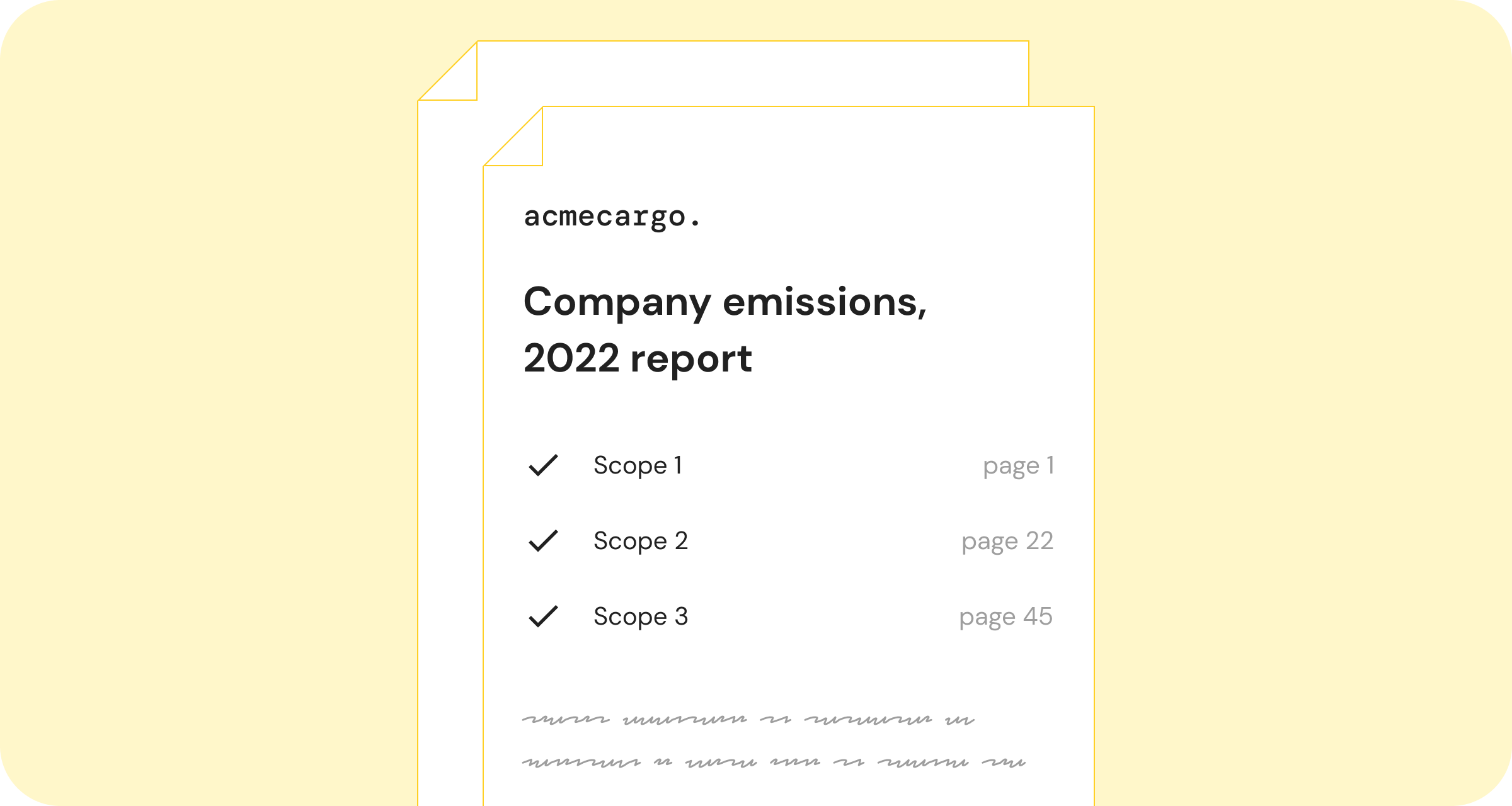
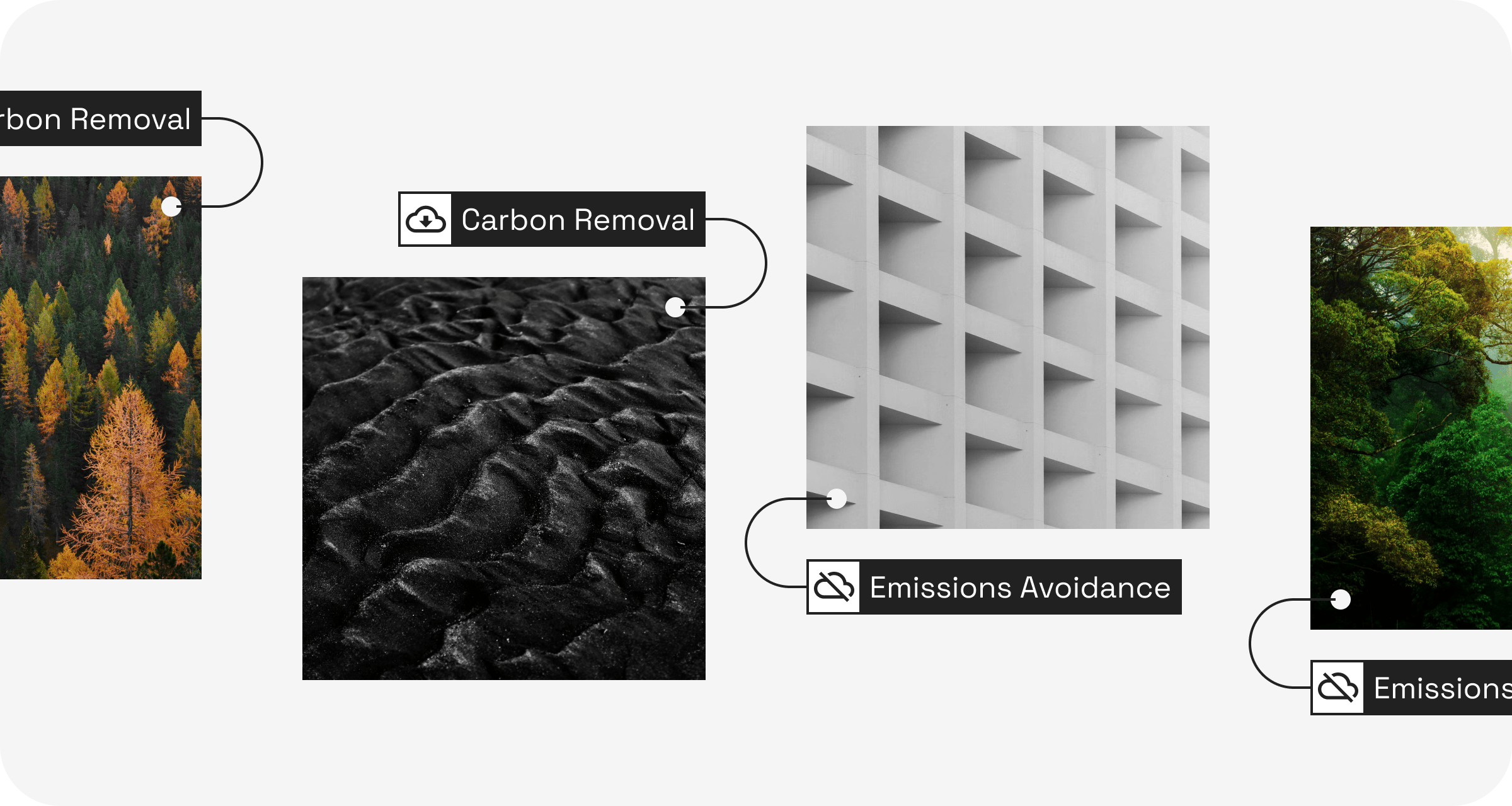
Carbon removal vs emissions avoidance – what's the difference?
Carbon offsetting projects fall into two categories, whether the offset has been generated by emissions avoidance (also known as emissions reduction) or by carbon removal. But what's the difference between these two methods? And should you prioritise one of them when purchasing carbon offset credits as a business?
Emissions avoidance
Emissions avoidance or emissions reduction projects are when an activity or project results in future greenhouse gas emissions being avoided or reduced.
The most common types of emissions avoidance carbon offset projects are:
- Renewable energy projects. For instance, building a solar farm close to a city which is currently powered by a fossil fuel plant will result in reduced future carbon emissions.
- Forest conservation or management. Protecting forests from the threat of deforestation maintains the carbon stored in the trees, preventing future carbon emissions.
- Carbon capture and storage technology in emitting industries. For instance, capturing and storing carbon emitted at fossil fuel power plants or industrial facilities will prevent emissions.
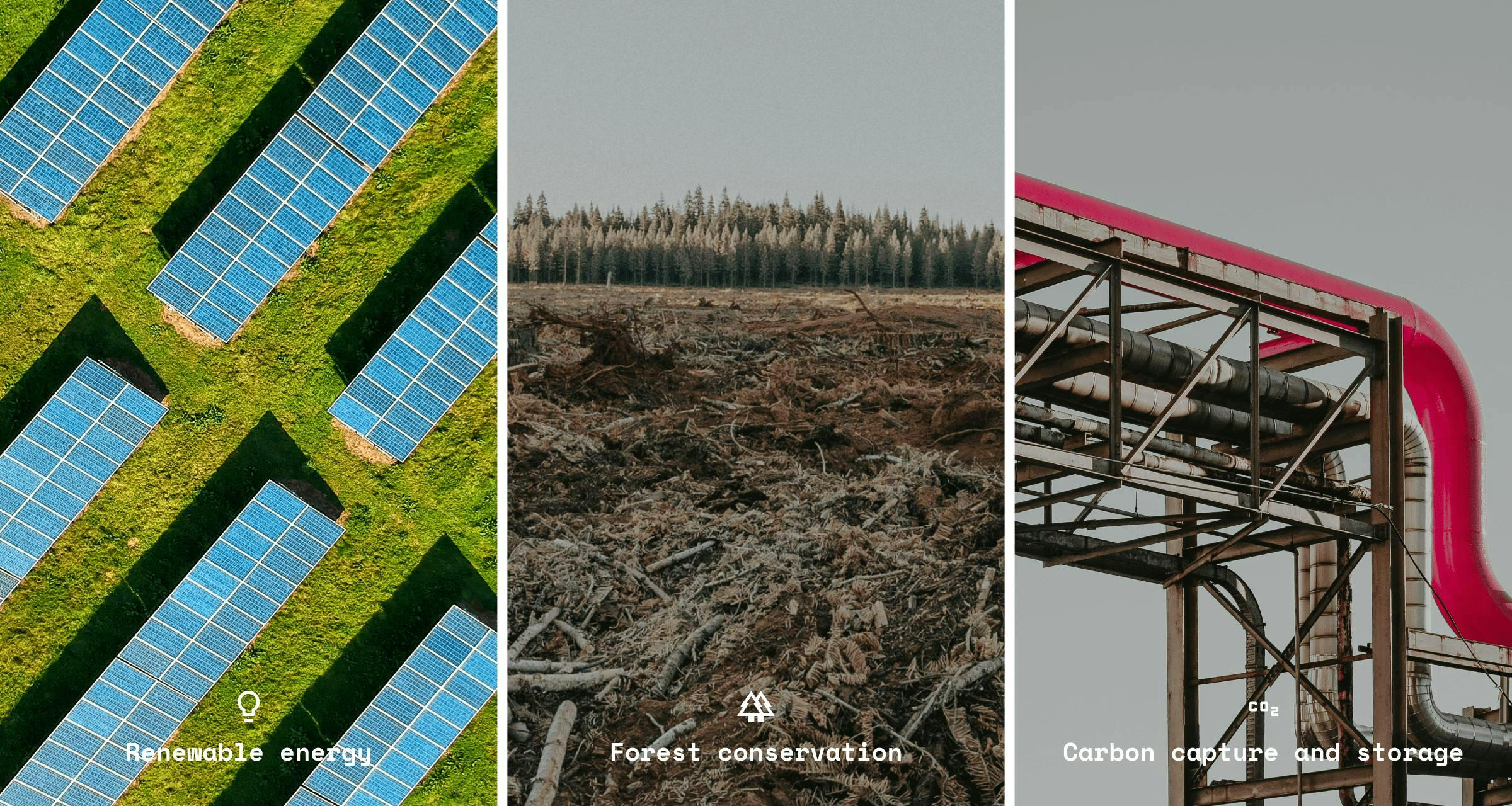
Carbon removal
Carbon removal projects – also referred to as Carbon Dioxide Removal (CDR) or carbon drawdown projects – physically remove existing carbon from the atmosphere. This happens in nature and can also be achieved by technological solutions.
New and innovative ways of removing carbon from the atmosphere are being worked on all the time, but currently some of the most common types of carbon removal projects are:
- Afforestation and reforestation. As trees grow they absorb and store carbon, and so planting forests increases the carbon removed from the atmosphere by trees.
- Direct air capture (DAC). Carbon is removed from the atmosphere directly through chemical processes.
- Enhanced weathering. CO2 in the air naturally reacts with minerals to become carbonate in a process called ‘mineralisation’, permanently removing carbon and storing it in solid form. Speeding up this process by grinding rocks up into small particles to increase surface area results in increased carbon removal.
Learn more about these carbon project types and more in our article on the different types of carbon offset project.

Subscribe for the latest insights into driving climate positivity
Emissions avoidance vs carbon removal – should businesses choose to buy one over the other?
Both carbon removal and emissions avoidance projects are needed to address climate change – we need to drastically reduce our current carbon emissions and to remove existing carbon from the atmosphere to meet climate targets.
As carbon offset project categories, they fulfil different functions and have different pros and cons:
Emissions avoidance projects are typically well-established methods which are now relatively easy to implement – think of renewable energy projects where the technology needed is now affordable and widely available, for instance, or forestry projects where less technology and development time is needed. This means that for emissions avoidance projects:
- Buying carbon credits enables immediate impact to made, because the project is already established – in some cases you can even buy ex-post carbon credits from these project types, representing measured impact that has already taken place.
- Most emissions avoidance projects are short-term solutions which delay emissions for a certain amount of time, but not for good – meaning they're often less 'permanent' as carbon projects
- The carbon credits they sell are affordable
Carbon removal projects, on the other hand, are often in the early stages of developing brand new methods for removing carbon emissions from the atmosphere, meaning:
- If their work is successful, these projects hold huge potential to remove vast amounts of carbon emissions from the atmosphere, which we desperately need to be able to do – so the impact made by buying carbon credits could be significantly higher.
- Many carbon removal projects are finding permanent storage solutions (e.g. direct air capture with geological storage with 1pointfive) to ensure the carbon they remove will never be re-released into the atmosphere, making them more permanent solutions. But...
- The carbon credits they sell are typically more expensive as they have a lot of research, development, set up, and technology costs, and because there are less carbon credits available in carbon removal projects.
- Often the impact represented by the carbon credits will actually happen in the future e.g. a direct air capture plant could be selling pre-purchase carbon credits to fund their project set up, but the carbon will actually be removed in a few years time once the plant is fully operational.
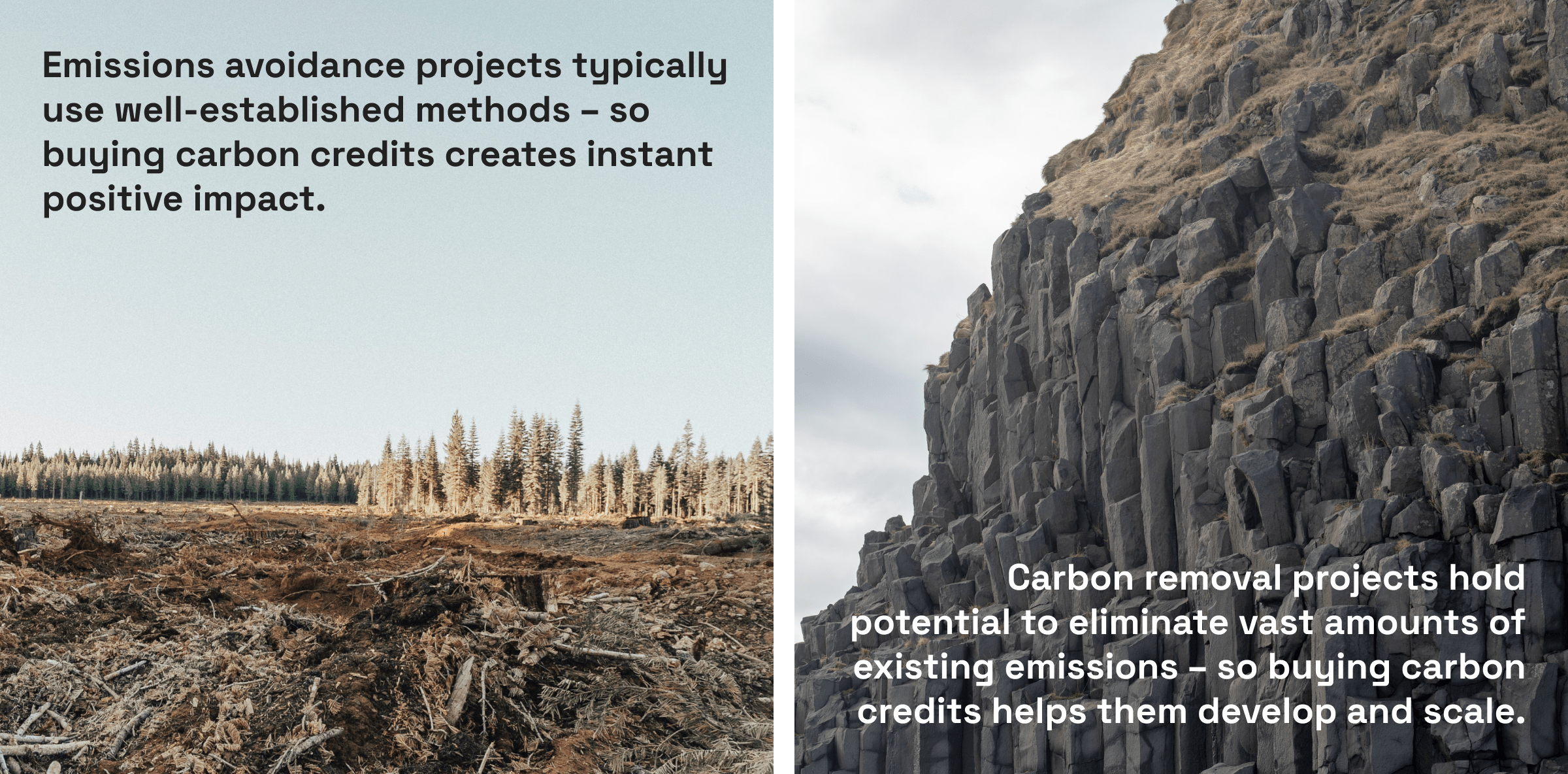
So, both emissions avoidance and carbon removal projects are super important in tackling the climate crisis.
If you have the budget, we'd recommend prioritising buying carbon removal credits – simply because so much investment is needed in carbon removal methods to help them develop and scale to the capacity we need. Read more about this argument in our article: every company should be buying carbon removal today – here's why.
But, given carbon removal is so much more expensive today, many companies feel they can't afford to do this.
We have two suggestions:
1. Contribute instead of compensate. Buying carbon removal is a hugely impactful climate action in itself, completely aside from the need to compensate for your company's own carbon footprint. So instead of buying carbon credits to neutralise your carbon footprint, you could set aside a dedicated budget for buying carbon removal from high potential projects – contributing to their development and scale up.
2. Create a carbon offsetting portfolio which includes a mix of emissions avoidance and carbon removal projects. A portfolio approach to carbon offsetting helps to balance the pros and cons of emissions avoidance and carbon removal projects – impact, cost, timing etc. Aligning your offsetting portfolio with the best practice approach of the Oxford Offsetting Principles will help to maximise the impact of your portfolio over time, and you can do this through the Lune dashboard with our Oxford Offsetting Principles aligned pre-made portfolio.
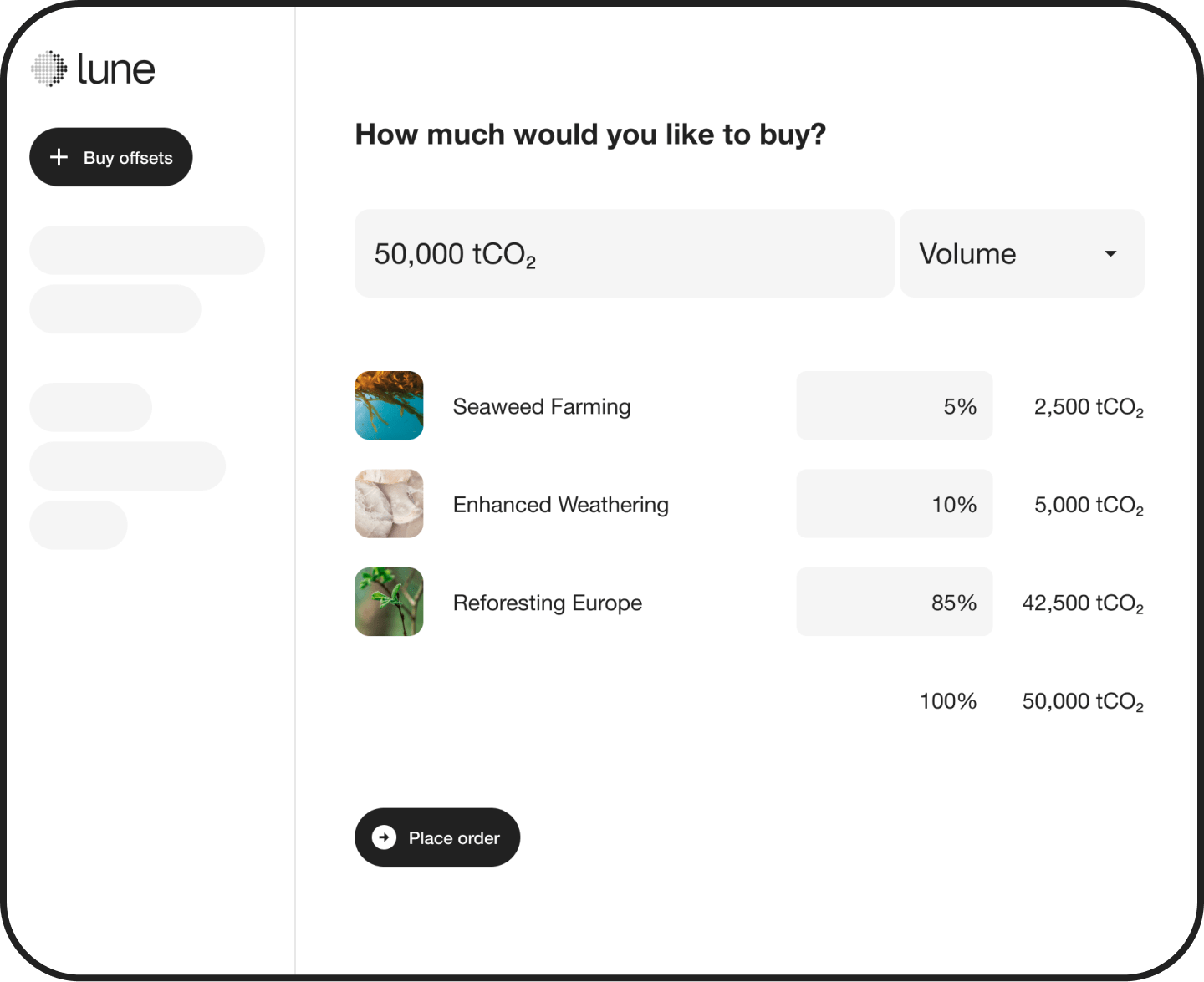
Popular insights
Popular insights



